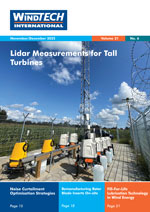The Spanish Government has published its findings on the widespread blackout that affected the Iberian Peninsula on 28 April. The investigation identifies power oscillations as the immediate cause of the disruption but does not determine their origin. It highlights the urgent need for Europe to invest in smarter and more resilient electricity grids to support energy security, competitiveness, and climate neutrality targets.
Red Eléctrica de España (REE), the national system operator, had previously managed similar or more severe oscillations. However, the measures deployed on 28 April were insufficient, leading to overvoltage conditions and the disconnection of several power plants under standard protection protocols.
To reduce the risk of future incidents, Europe must strengthen electricity infrastructure. This includes investing in grid reinforcement, increasing cross-border interconnection capacity, and improving the regulatory environment. Accelerated deployment of proven technologies—such as digitalisation tools, energy storage, and grid stabilisation equipment—should be prioritised over imposing short-term technical obligations on renewable electricity producers.
The European Parliament has recently supported this approach. On 19 June it adopted a report calling for electricity grid investments to match the strategic focus and efficiency of renewable energy investment. Improved regulatory support and clearer market signals are needed to scale up technologies such as synchronous condensers, static synchronous compensators, and broader grid optimisation tools. Ireland and the UK have already developed stability markets that provide positive examples of this approach.
Modern wind farms are increasingly capable of contributing to system stability through voltage and frequency support. Grid-forming capabilities are under development but will take several years to become widespread. Enabling them requires appropriate market mechanisms and support from system operators.
Additional potential lies in wind farms co-located with other renewable generation or battery storage. However, outdated market rules and regulatory uncertainty continue to delay these developments. The recent postponement of the revision of the EU Grid Connection Network Codes risks fragmentation, as national transmission system operators may adopt uncoordinated approaches. This could undermine efforts to create a coherent and realistic framework across Europe.










